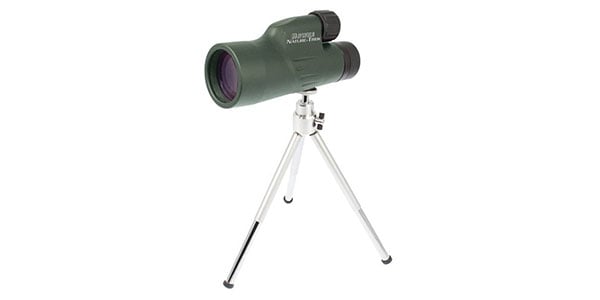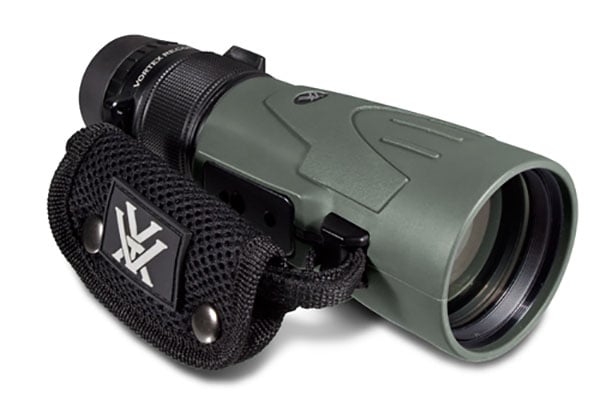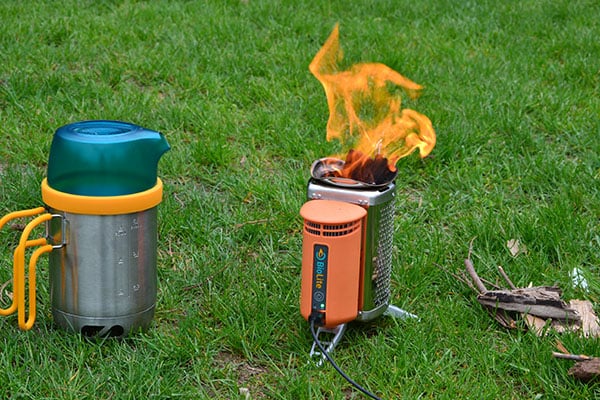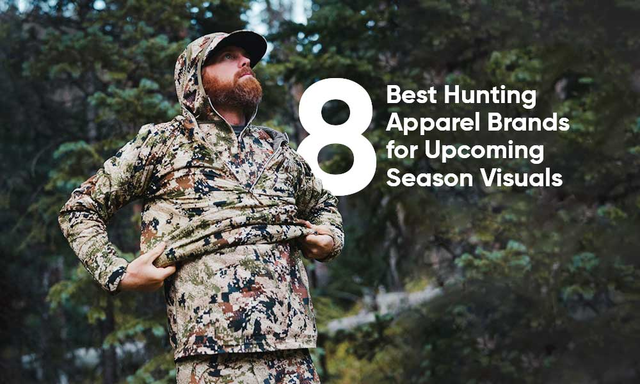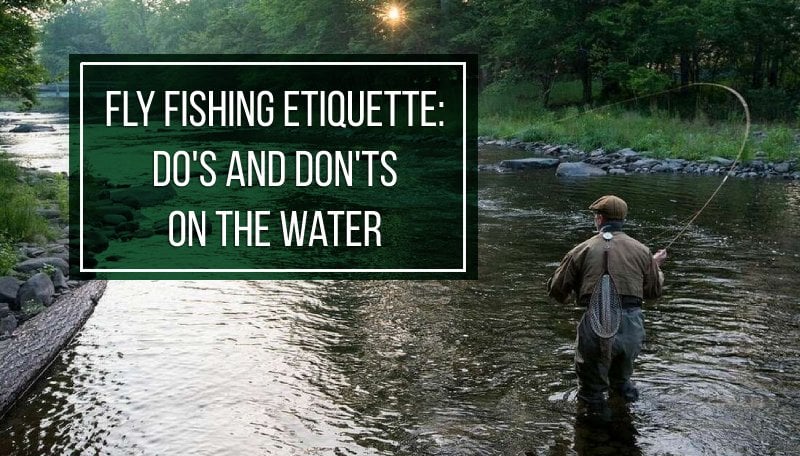Last Updated on
By David Link
You may have seen monoculars listed alongside other sport optics like binoculars and spotting scopes and wondered if they were really worthwhile optics. They tend to be relatively inexpensive and they look very small when compared to their binocular and spotting scope cousins, so they must be inferior when compared to other sport optics, right? Well this is actually not the case at all, and depending on your intended use, a monocular might be the best choice available. Let’s examine what exactly monoculars do and how they are best used.
Design Basics
The best way to describe a monocular is “half a binocular” and really half a binocular minus the hinge if we’re exact. Monoculars are designed for use in one eye while the other eye is closed just like a spotting scope. Because they are half a binocular, they are generally very light and compact, which can be a desirable attribute for anyone short on pack space. They won’t have near the magnification power of spotting scopes and some binoculars, typically 6x – 10x, but they can still provide a decent level of magnification in the field. Their objective lens sizes can range from 8mm all the way up to 50mm, and you can determine this by looking at the second number in the monocular’s specs noted after the magnification power and denoted in milimeters like so: 6x10mm.
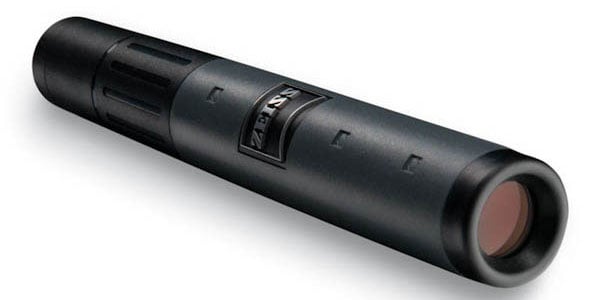
You’ll find monoculars in both porro and roof prism designs just like binoculars. Porro prism monoculars are the older of the two designs, and they have a “dog leg” or kink between the eye piece and objective lens. Roof prism monoculars on the other hand are straight and utilize a more complex mirror system to send the image from objective lens to eyepiece. Roof prism monoculars dominate the market today because they are much more streamlined, and if space saving is your primary goal, then a roof prism monocular is the prudent choice anyway. You’ll also find every level of coating from coated to fully multi-coated optics in monoculars as well. For the best optical quality, you’ll get the best results from fully multi-coated optics.
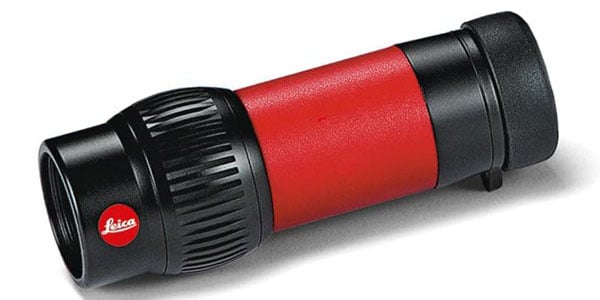
Common Uses
There are several scenarios where a monocular might be the best option or at least a comparable option when compared to binoculars. The most obvious will be situations where you want an optic for casual use but don’t have a lot to spend. Aside from that scenario, let’s examine some other popular uses for monoculars.
Birdwatching
If you regularly take birdwatching walks or hikes, then you’ve probably toted a pair of binoculars along to get up close to your avian subjects. However, for those who aren’t “serious birders,” the extra bulk of a binocular might be unnecessary, especially if your typical subject is only in nearby trees. Those who are older or don’t want the extra weight and hassle of a binocular strung around their neck will find the size and shape of the monocular advantageous as well.
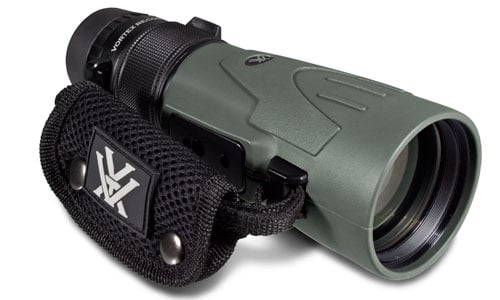
Close Range Hunting
If you’re in the high country scanning a vast range of wilderness, then you should pass on a monocular and opt for binoculars or a spotting scope instead. However, if you hunt smaller country or only a few acres, then a monocular might be a better option than bulky binoculars. Often times you’ll only need the initial spotting capability of an optic for smaller areas, i.e. is that a big buck or a tree branch, and a monocular will save space in your hunting pack for other needed gear. A monocular will also be friendly for those who sit in tree stands and don’t have a lot of space to work with in the first place.
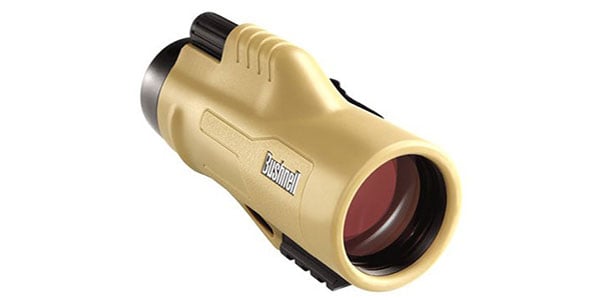
Travel
Are you taking a sight seeing trip to another state or country but want to bring an optic along? Since suitcase space will no doubt be at a premium, a monocular may be a great alternative when compared to packing a binocular in with your other items. You’ll have to exercise some care when packing it, and it isn’t wise to put a monocular in checked baggage because of potential damage, but once you get to your destination chances are you’ll really enjoy the addition of a sport optic in your sight seeing adventures.
Sporting Events
If you’ve taken a pair of binoculars to a sporting event, then you know it can be an extra hassle to tote them along while carrying food, beverages, and other items to your seats. An alternative to this is bringing a monocular to those events where you just need a little more magnification. For example, you can check to see who is in left field or who is leading the auto race easily with a monocular at your side.
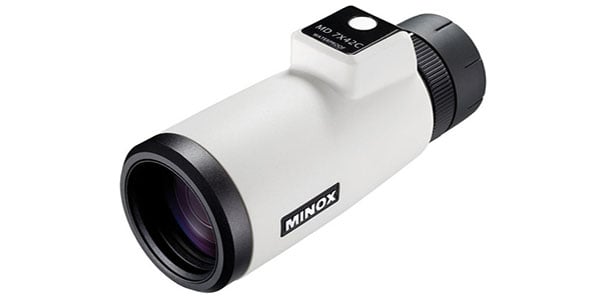
Astronomy
Surprisingly enough, a monocular can be great for star gazing as well. Of course, nothing is going to come close to a telescope, but if you’re getting out of the city to see a lunar eclipse or meteor shower, then a monocular will enrich your viewing experience without the pain of having to lug and calibrate a telescope. The lightweight nature of a monocular also helps you focus on objects at tougher angles like directly above your head.
Drawbacks
The monocular design certainly isn’t perfect, and there are some drawbacks to note as you evaluate whether or not your gear collection needs a monocular. The lower magnification common in monoculars isn’t always ideal in the field, especially if you end up in a situation where you’re trying to spot something far off. Know your typical environment and how you’ll be using sport optics before choosing a monocular. You will see some higher magnification monoculars on the market, but be weary of anything with a setting higher than 8x. Your field of view will be smaller making it harder to find an object on the fly, and it will be much more difficult to keep the monocular steady as you look at an object. Older users who have problems with shaky hands will sometimes find the monocular design hard to keep steady no matter the magnification, and in this case we recommend 6x models to counteract this possibility. As an alternative, some people have had luck combining a mono-pod or bi-pod with a spotting scope to decrease shaking during use. This will increase your pack load a bit, but if shaking is an issue, then it’s the easiest fix.
